|
|
Dear colleagues
In the last ten years, ultrafast X-ray science had an impressive growth and many developments were made due to the unique properties of X-ray Free Electron Laser light sources. In comparison to synchrotron storage rings, X-ray Free Electron Lasers have brought a significant improvement in time resolution (i.e. typical pulse widths below 100 fs), with an impressive increase in photon flux per pulse by several orders of magnitude.
On the 30th of November 2017 SwissFEL performed its first successful experiment. By reaching this milestone SwissFEL stamps its entry in the ultrafast X-ray science. The pilot experiment phase will continue until the start of regular user operation in January 2019.
|

Luc Patthey
|
|
In the light of these recent achievements and its unique features, SwissFEL will provide new potential impact on ultrafast science and offer scientific breakthroughs in Chemistry, Biology, and Materials Science, as well as nonlinear X-ray science.
SwissFEL will also provide a state-of-the-art research environment to promote technical innovations as well as the education of talented young scientists in collaboration with universities and high technical school.
Luc Patthey,
on behalf of the PSI SwissFEL team
|
|
Next proposal submission deadlines:
Particle Physics
deadline: January 15, 2018
more information
SINQ
deadline: February 20, 2018
more information
SµS
deadline: February 28, 2018
more information
SLS/SINQ: joint X+N powder diffraction
deadline: February 2018
more information
SLS: non-PX-beamlines
deadline: March 15, 2018
more information
SLS: PX beamlines
deadline: April 15, 2018
more information
An overview about all proposal submission deadlines of the PSI facilities can be obtained here.
|
|
|
Three Dimensional View of Structural Changes caused by deactivation of Fluid Catalytic Cracking Catalysts
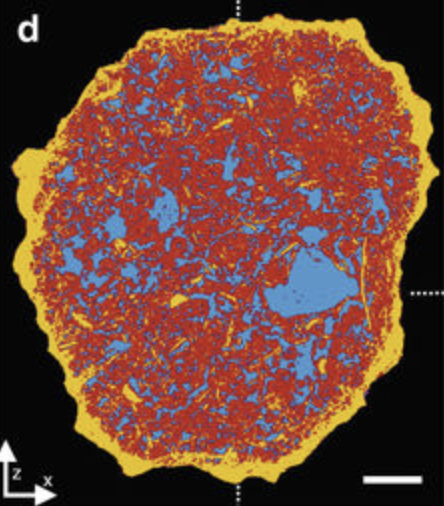 SLS - A look into a prominent heterogeneous catalyst SLS - A look into a prominent heterogeneous catalyst
Fluid catalytic cracking, a century old chemical conversion process utilizing porous composites of zeolite and clay, up to this day provides the majority of the world’s gasoline. Owing to harsh reaction environments and feedstock impurities the employed catalysts deactivate, necessitating their continuous fractional replacement with major refineries requiring up to 40 tons of fresh catalyst in total on a daily basis. Using a combination of ptychographic, x-ray diffraction and -fluorescence tomography researchers from PSI and ETH elucidated the structural changes behind catalyst deactivation.
Read the full story
|
|
|
J. Ihli et al, Nature Communications 8, 809 (2017)
|
|
|
Coulomb spin liquid in anion-disordered pyrochlore Tb2Hf2O7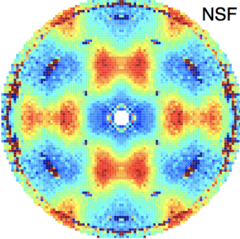
SINQ, SμS and SLS - Frustratingly disordered
In a frustrated magnet, spins are arranged in geometries that prevent the formation of conventional magnetic patterns such as ferromagnetic or anti-ferromagnetic order. Yet, the interaction between the spins can nonetheless lead to highly correlated quantum states, including exotic ones that remain not fully understood such as so-called spin ices or spin liquids. Frustrated magnets are therefore ideal materials for investigating, both theoretically and experimentally, the intricate interplay of interactions in quantum many-body systems and the phases emerging from them ...
Read the full story
|
|
|
R. Sibille et al, Nature Communications 8, 892 (2017)
|
|
|
Signatures of the topological s+- superconducting order parameter in the type-II Weyl semimetal Td-MoTe2
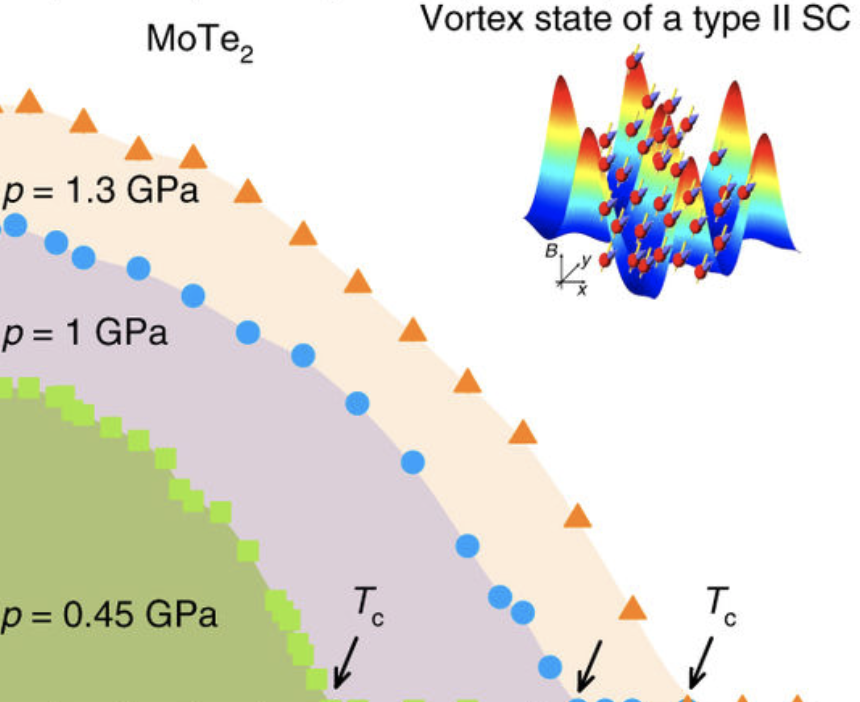 SμS - Topological matter SμS - Topological matter
In its orthorhombic Td polymorph, MoTe2 is a type-II Weyl semimetal, where the Weyl fermions emerge at the boundary between electron and hole pockets. Non-saturating magnetoresistance and superconductivity were also observed in Td-MoTe2. Understanding the superconductivity in Td-MoTe2, which was proposed to be topologically non-trivial, is of eminent interest. Here, we report high-pressure muon-spin rotation experiments probing the temperature-dependent magnetic penetration depth Td-MoTe2 ...
Read the full story
|
|
|
Z. Guguchia et al, Nature Communications 8, 1082 (2017)
|
|
|
Semiconductor to metal transition in Ti3O5 nanocrystals
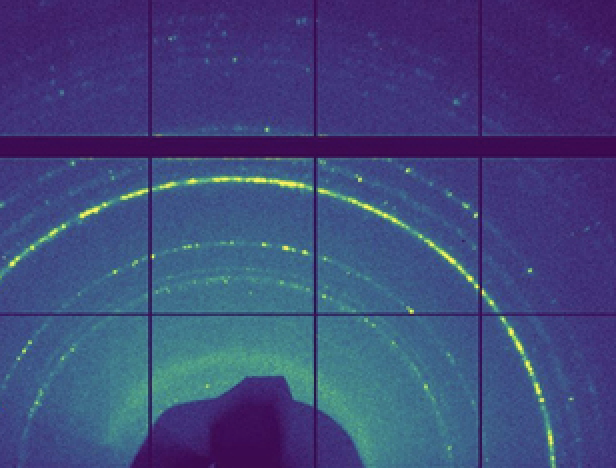 SwissFEL - First time resolved pilot experiment SwissFEL - First time resolved pilot experiment
On the 30th of November 2017 SwissFEL saw its first time resolved pilot experiment in the Bernina experimental station of the SwissFEL ARAMIS beamline. A team of scientists from the University of Rennes, ESRF and PSI, led by Marco Cammarata (Univ. Rennes) and Henrik Lemke (PSI), successfully started the experimental phase at SwissFEL. The goal was to study the picosecond dynamics of a light-induced phase transition from a semiconductor to metallic crystal structure in a Titanium Oxide (D) ...
Read the full story.
|
|
|
Have a look at the PSI press release.
|
|
|
Search for Axionlike Dark Matter through Nuclear Spin Precession in Electric and Magnetic Fields
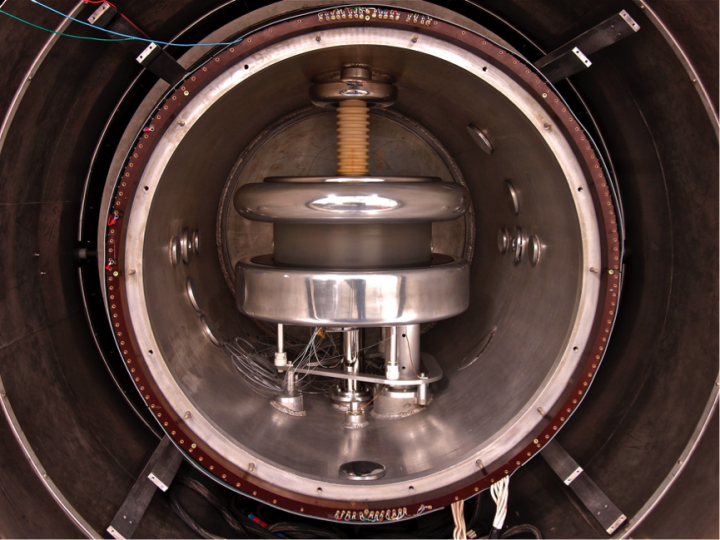 Particle Physics - A null result full of insights Particle Physics - A null result full of insights
A laboratory-based search for axion dark matter ended, not unexpectedly, without a discovery. It provides, however, valuable constraints for the properties that these hypothetical particles can have - and thus a guide to where to look next.
Read the full story.
|
|
|
C. Abel et al, Physical Review X 7, 041034 (2017)
|
|
|
The SLS-2 upgrade project
SLS
An upgrade of the Swiss Light Source, named SLS-2, will increase the brightness and coherence of synchrotron radiation in order to maintain the PSI at the forefront of x-ray science with the advent of the next generation of light sources.
The electron storage ring of the SLS will be replaced by a new one with a larger number of magnets and reduced vacuum chamber dimensions and magnet apertures. A novel type of lattice combining 84 bending magnets with longitudinal field variation and 144 bending magnets with reversed field polarity will lower the horizontal emittance by a factor of 45 compared to today, down to a value of 125 pm.rad at 2.4 GeV beam energy and 400 mA stored current (with 10 pm.rad vertical emittance and 50 ps FWHM bunch length). The existing injector complex will be re-used.
A conceptual design report has been reviewed by an international committee in September. A proposal will be submitted to the Swiss National Science Foundation by the end of the year to place SLS-2 on the research infrastructures roadmap in the period 2021-24. First light from SLS-2 is expected for the fall of 2024.
|
|
ZEBRA diffractometer: solving structures of very tiny samples
SINQ
The new neutron single-crystal diffractometer Zebra, which has replaced the TriCS instrument, is in user operation since May 2017. It allows crystallographic and parametric studies (temperature, magnetic and electric fields, pressure). Zebra is designed to achieve high peak-to-background ratio. The instrument is aimed at resolving challenges emerging in systems that are available as small crystals and requiring extreme sample environments.
Metal-Organic Frameworks are typical examples of novel materials that are often only available as small single crystals and where various topologies of spin carriers can lead to remarkable properties. In Mn5(OH)2(C4H4O4)4, about 140 Bragg reflections were measured on ZEBRA using a sample of mass 0.35 mg, revealing a complex non-collinear antiferromagnetic structure with three independent magnetic sites.
More information.
|
|
New Spin Rotator for PiM3
SμS
Recently a new spin rotator has been installed in the PiM3 secondary beamline delivering spin-polarized muons to the GPS and LTF instrument. The new device features much improved characteristics compared to the 40 years old one with respect to stability, transmission and rotation angle. With its maximal operation voltage of 600kV it achieves a 65 degrees muon spin rotation leading to a 91% polarization which is now available for transverse field μSR experiments.
|
|
How 'super-microscopes' are changing the face of European science
SwissFEL
On November 13, 2017 16 organisations representing 19 light sources facilities across Europe gathered in Brussels to launch the LEAPS initiative and signed an agreement to strengthen their collaboration, in the presence of Robert-Jan Smits, Director General for Research and Innovation (RTD) at the European Commission, and Giorgio Rossi, Chair of the European Strategy Forum on Research Infrastructures (ESFRI).
LEAPS, the League of European Accelerator-based Photon Sources, aims to offer a step change in European cooperation, through a common vision of enabling scientific excellence solving global challenges, and boosting European competitiveness and integration. This will be achieved through a common sustainable strategy developed in coordination with all stakeholders, including national policy makers, user communities and the European Commission. The light sources that form LEAPS are all accelerators-based, producing exceptionally intense beams of X-rays, ultra-violet and infrared light. They count with a community of 24.000 direct user scientists with an extended network of 35.000 researchers, among them five Nobel Prizes. |
|
nEDM-spectrometer dismantled after successful data taking
Particle Physics
Originally conceived in Sussex, first operated at the Institute Laue-Langevin (ILL), the neutron electric dipole moment (nEDM) spectrometer was upgraded for measurements at PSI starting with its move in 2009. On October 16th the last ultracold neutrons (UCN) were counted with this device.
Dismantling of the apparatus started immediately and only weeks later, with the great support of PSI services from Hallendienst to SU radiation protection, UCN area South is ready for assembly of the new n2EDM experiment. Data of the nEDM spectrometer resulted in more than 10 seminal publications of which four are historical upper limits for the nEDM.
The latest spectacular publication, a limit on ultra-low mass axions, is highlighted in this facility newsletter, see above.
|
|
JUSAP - The Joint Users Association
Dear colleagues
The construction works of Park innovAARE close to SLS will start in 2018, tentatively scheduled for end of May. It is expected that the resulting vibrations will affect the operation of the SLS (but not of the HIPA facilities). In reaction, the SLS management and the construction company have established a close collaboration to minimize those effects, notably by introducing extra “machine and beamline development” shifts on Wednesdays.
|
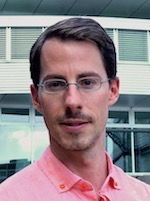
Claude Monney
|
|
During user operation time, heavy construction works will be restrained. The impact on the schedule for the second semester of 2018 will be evaluated in March 2018. Current expectation is that the existing shutdowns and vibration intense works can be coordinated to maintain a high level of availability of the SLS.
Planned major upgrades of the High Intensity Proton Accelerator (HIPA) facility in 2018 and of SINQ in 2019 will result in shortened operation cycles affecting the neutron, muon and particle physics communities: There will be only one call for neutron science proposals in 2018 and no call in 2019.
The upgrade of SINQ involves replacement of all neutron guides. As a result, when SINQ commences operation in May 2020, neutron flux gain factors between 2 and 30 (depending on the instrument) can be expected. Planned improvements of the guide shielding will further improve the signal to noise ratio to the benefit of the SINQ user community.
We encourage you, members of the PSI user community, to communicate to us any issues, concerns or suggestions. In this case, please contact me or other committee members directly.
Yours sincerely,
Claude Monney (on behalf of the JUSAP committee)
|
|
Upcoming events
Please have a look at our conference calendar.
|
|
|
|